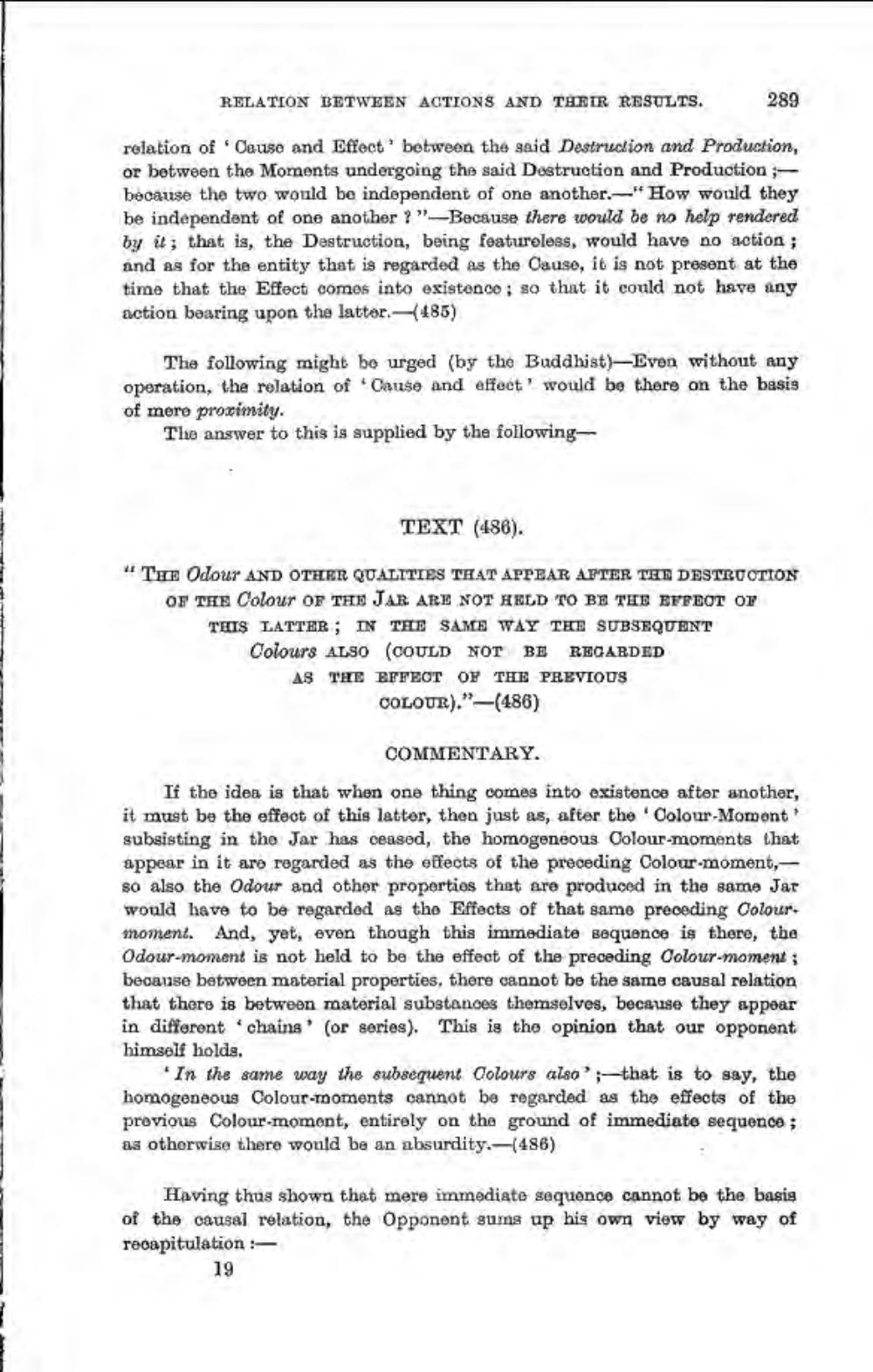________________
RELATION BETWEEN ACTIONS AND THEIR RESULTS.
289
relation of Cause and Effect' between the said Destruction and Production, or between the Moments undergoing the said Destruction and Production - because the two would be independent of one another. "How would they be independent of one another?"_Because there would be no help rendered by it; that is, the Destruction, being featureless, would have no action; and as for the entity that is regarded as the Cause, it is not present at the time that the Effect comes into existence; so that it could not have any action bearing upon the latter. -485)
The following might bo urged (by the Buddhist)-Even without any operation, the relation of Cause and effect' would be there on the basis of mere provimity.
The answer to this is supplied by the following
TEXT (486).
"THE Odour AND OTHER QUALITIES THAT APPEAR AFTER TAR DESTRUCTION OF THE Colour OF THE JAR ARE NOT HELD TO BE TIB EFFDOT OY TELIS LATTER; IN THE SAME WAY THE SUBSEQUENT Colours ALSO (COULD NOT BE REGARDED AS THE EFFEOT OY THE PREVIOUS
COLOUR)."-(486)
COMMENTARY.
If the idea is that when one thing comes into existence after another, it must be the effect of this latter, then just as, after the 'Colour-Moment subsisting in the Jar has ceased, the homogeneous Colour-moments that appear in it are regarded as the effects of the preceding Colour-moment, so also the Odour and other properties that are produced in the same Jar would have to be regarded as the Effects of that same preceding Oolour. moment. And, yet, even though this immediate sequence is there, the Odour-moment is not held to be the effect of the preceding Colour-moment ; because between material properties, there cannot be the same causal relation that there is between material substances themselves, because they appear in different chains (or series). This is the opinion that our opponent himself holds
In the same way the subsequent colours also that is to say, the homogeneous Colour-moments cannot be regarded as the effects of the previous Colour-moment, entirely on the ground of immediate sequence ; as otherwise there would be an absurdity.-(486)
Having thus shown that mere immediate sequence cannot be the basis of the causal relation, the Opponent sums up his own view by way of recapitulation :
19




